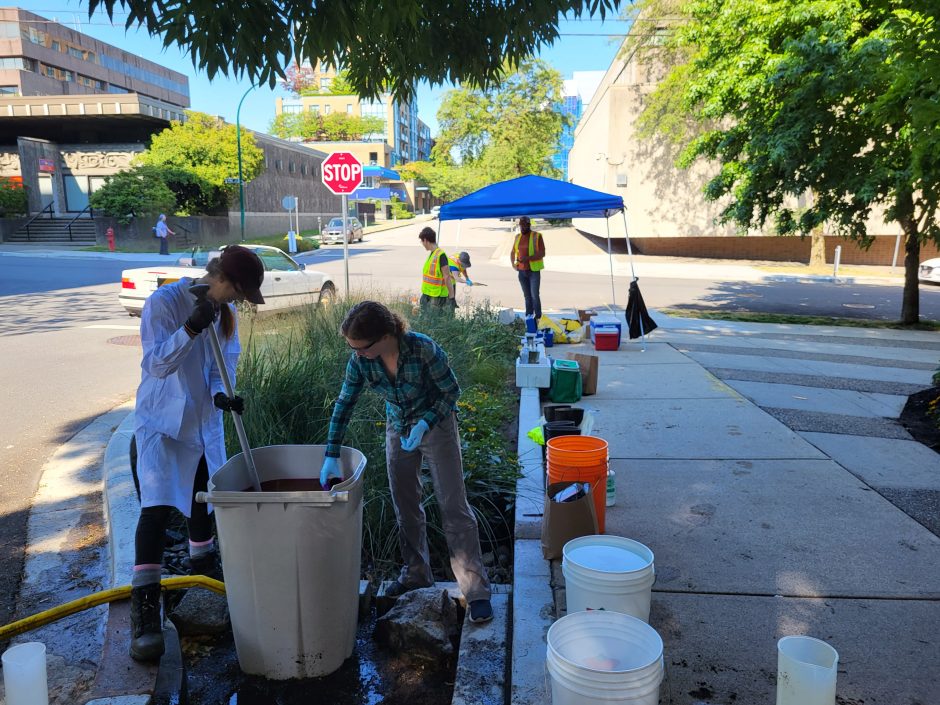Salmon holds immense ecological and cultural significance in B.C. However, the survival of these magnificent fish is under threat due to multiple stressors. Among the challenge salmon fac is a toxic chemical associated with car tires, which finds its way into our rivers and streams when rainwater washes it off roads. Fortunately, there’s a ray of hope – recent research shows that specially designed rain gardens could help protect salmon from this harmful compound.
The chemical 6PPD-quinone is a byproduct that forms when car tires interact with the atmosphere. Coho salmon, rainbow trout, and other fish are particularly vulnerable to its harmful effects.
Rain gardens, also known as bioretention cells, could play a pivotal role in reducing the impact of 6PPD-quinone on our aquatic ecosystems. These gardens are engineered to manage flooding and capture pollutants from road runoff directed onto them.

In collaboration with the City of Vancouver, Dr. Rachel Scholes’s research group conducted a groundbreaking experiment. They selected a rain garden located at 8th and Pine and simulated a large storm event by pumping 14,000 liters of water containing 6PPD-quinone onto the garden for four hours. They then analyzed the water draining from beneath the garden at regular intervals. The results were remarkable – only about two to five percent of the toxic chemical passed through the garden, with approximately 75 percent of it being captured by the soil and plants.
By extrapolating their findings using computer models, the research team estimated that rain gardens like the one at 8th and Pine could reduce the amount of 6PPD-quinone in road runoff by more than 90 percent during an average year. This suggests that widespread adoption of rain gardens could be a game-changer for salmon conservation efforts.
The notable outcome of this vital research is made feasible due to the collaboration between The City of Vancouver and the university faculties and students. The City of Vancouver is already committed to developing more “green infrastructure,” including rain gardens. This research can serve as a valuable guide for municipalities to strategically plan the implementation of rain gardens, especially in areas with major highways that contribute to runoff pollution in salmon-bearing streams. By redirecting rainwater into these bioretention cells, cities can simultaneously achieve multiple environmental goals including alleviating stress on our sewer system, reducing flooding, improving water quality, and protecting wildlife.
While the initial results are encouraging, the research team acknowledges that there is still much to learn about rain gardens’ efficiency in filtering contaminants like 6PPD-quinone. As the team move forward, they are focusing on fine-tuning the garden designs to optimize pollutant removal. Their next crucial step involves exploring differences in design to assess how effectively rain gardens can filter water. Conducting more extensive field studies will be essential in gathering valuable data to further refine rain garden designs and enhance their contaminant-removal capabilities.
In a world where environmental challenges continue to mount, this research underscores the importance of science-driven solutions and proactive measures to protect our natural resources.
